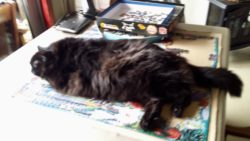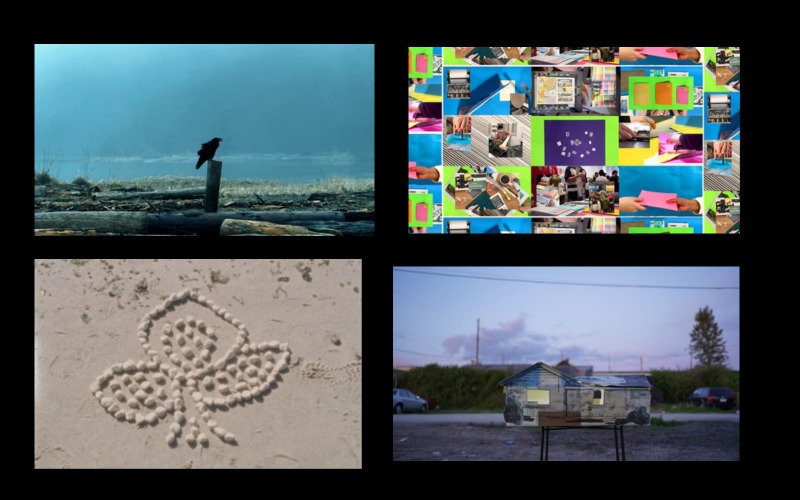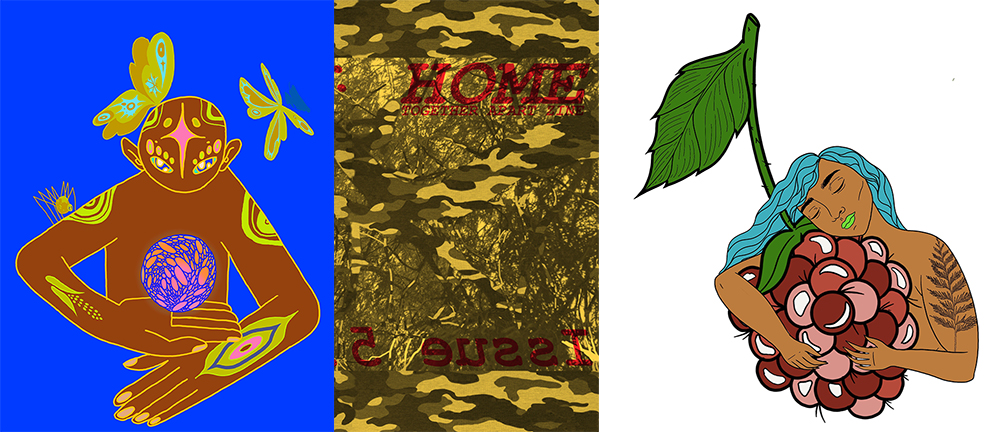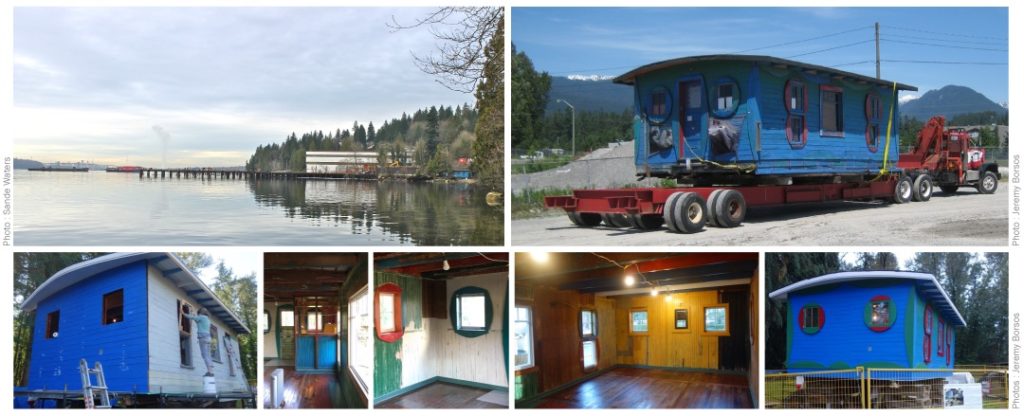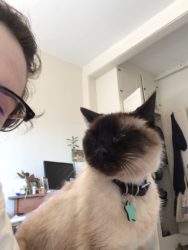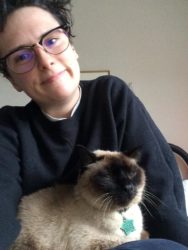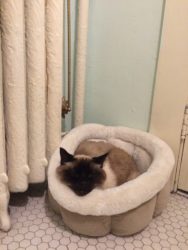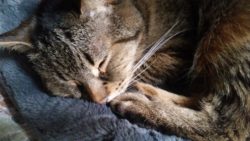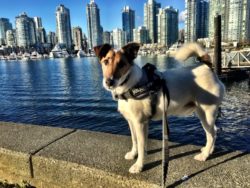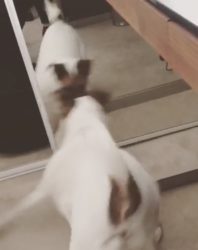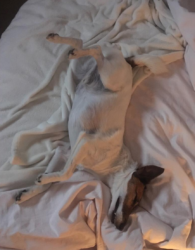Dear readers,
The time has come, the final installation of Hedy Wood’s Pet Peeves is here. Now, dry your tears and read on as Hedy turns her investigation on her own pet, Blackberry.
After about a year of talking to the pets at grunt, and seeing all those lovely relationships between pets and people, something dawned on me. It seemed like the only place I was truly going to find any complaints, or peeves, was probably right in my own home. I’ve noticed Blackberry sometimes has quite a peeve-ish little look on her face… not that she isn’t the nicest cat in the world, because she is. Still, I felt I could likely uncover something…

The two of us often go for quite a long time without talking too much. I might ask,
“How about some lunch?”
And she’ll say, “Yes, I believe I mentioned that three hours ago.”
Or, I can say, “Isn’t it about time we trimmed those claws of yours?”
And she’ll respond with “I’d better go and hang out under the bed for several hours…”
We can go on like this for ages. But I liked the idea of interviewing her. We have a cute story about when we met that people might like to hear….
Me: Remember, Blackberry, when I rescued you from that cage at the PetSmart store in North Van? Was it 10 years ago now?
Blackberry: Aren’t you kind of leaving out the part where you were online dating another cat!? And then you went to meet up with that cat, and she bit you?
Me: Oh right, yeah, I forgot about that…
Blackberry: Then she got a bad case of diarrhea! And you were all scratched up! And it was about then that you saw me, and realized how great I am… and since we’re talking about it, why exactly do you always tell this story as though YOU rescued ME? More like the other way round in my opinion… and what actually is it that makes you think this apartment is so much larger than that cage anyway? Ha ha ha. Ha.
Me: Gee, I’m so glad we’re doing this.
Blackberry: Ha. Snort. Heh heh…
Me: Okay, okay, don’t cough up a hairball! Let’s try talking about something nice… Or at least not too diminishing for me…
Blackberry: Sounds good. What did you have in mind?
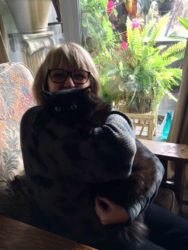
Me: Well, how about if you answer the age-old question, why do cats follow people into the bathroom?
Blackberry: Well, ha! It’s just so FUNNY! You’re in there with no proper litter box, only a bit of paper and a big flush-y thing! Ha ha ha!!!
Me: Hmm, I see, I may never go again now that I know that. I mean, I don’t laugh at your litter box.
Blackberry: The flushing!!! The paper!! HA!
Me: Well, try not to lose control completely… none of the other cats I talked to mentioned any of this.
Blackberry: Did you ASK them?! Oh my big aunt Betty! What a hoot.
By this time I was sort of struggling to achieve an interview with some dignity while Blackberry continued rolling around on the floor and giggling. She was acting like a person with a bad case of the sillies, and I feared that any subject I mentioned would only bring on more hysteria. But I still had a couple of questions on my list.

Me: And what is it with cats and toenail trimming anyway? Why not just sit quietly and get your nails clipped? What’s the big hairy deal with that?!
Blackberry was using her paw to wipe a tear from her eye. Remember when I BIT you so hard when you tried to trim my claws?! The BLOOD?! Ha ha ha!!!
Me: Right, so funny I forgot to laugh. I’m beginning to realize why we don’t always talk that much!
Blackberry: Ok, ok don’t get your fur in a knot. I’m just trying to have some fun. What is actually on your mind anyway?
Me: I’m just trying to find out if you have any complaints, you know, anything we could improve on around here.
Blackberry: So glad you asked! For one thing, what’s with the nicknames? Is there a being on the planet who would enjoy being called Bumblebooby? Or Boobleberry? Or Binkybumbles?
Me: Got it, I thought that was kind of cute.
Blackberry: Fudge! It’s about as cute as the complete and utter lack of FOOD around this place!
Me: Well, there IS food, and the vet said…
Blackberry: Vet, shmet!
Me: The vet said that 15 pounds is too large. He said you were registering in at a nine on the cat obesity scale, which, by the way, only goes to nine…
Blackberry: Nonsense. I am a full-figured cat, and I have big hair, period. And that reminds me, have you actually been cutting my treats in HALF?! Who DOES that?
Now, I do that, and had been doing it for months because of the cat obesity thing, but I wasn’t ready to admit it…
Me: Of course I’m not doing that! Who would do that? You must be paranoid.
Blackberry: Maybe, but at least I don’t go to the bathroom in a big vat of water.
Me: You’re not being very mature right now.
Blackberry: Ha! That’s probably because I am starving to DEATH around here. How about doling out one of those miniature treats? I hear that when other cats are interviewed, they get treats by the handful, like the actual sized ones…
Okay, I couldn’t really lie about that to her. So I gave her a few half treats, and then we stopped talking. We just went back to our regular amount of talking, and that seemed for the best. I still had a few unanswered questions, like why SIT in the box of pieces when I’m working on a jigsaw puzzle? Or, what is so great about burrowing under the bed covers and staying in there for hours? But maybe those were best left for another day, Blackberry seemed to be trying very hard to subdue her fits of giggling… and I had to go to the bathroom…
